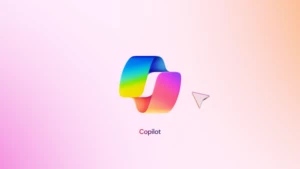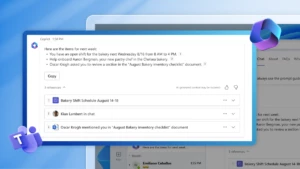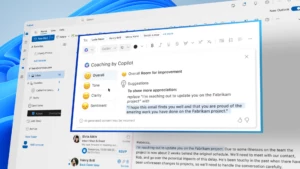
3 ways technology can help rebuild your frontline workforce
The two billion frontline workers, who represent 80 percent of the world’s workforce, have weathered risk, exhaustion, and ongoing disruption throughout the pandemic. From shutdowns to new safety protocols to increased workloads and dwindling inventory, the frontline is constantly facing challenges. The past several weeks have been particularly draining with healthcare workers bracing for another wave of the pandemic and airlines canceling a record number of flights due to staff shortages. And, unfortunately, for some, there seems to be no respite in sight—58 percent of frontline workers believe their work stress will either stay the same or worsen next year, according to the latest Work Trend Index Special Report.
But it’s not all doom and gloom. There has never been a better time—or greater need—for new strategies and solutions that help build the frontline for long-term success by both prioritizing their well-being and maximizing their productivity. Successful organizations recognize that empowering the frontline is key to their bottom line, which creates a more balanced approach to business and achieves better results. Based on the Work Trend Index Special Report, here are three areas companies can focus on:
- Equip workers with technology to reduce stress and system friction.
- Prioritize and modernize training.
- Build company culture that includes the frontline.
Microsoft builds solutions to empower frontline workers to communicate, schedule shifts, execute tasks, and much more. It has long been a part of our mission, whether it is helping customers like Kendra Scott more deeply connect their corporate headquarters with their frontline or creating simple and integrated employee experiences for customers like Blum. Today, with the Work Trend Index research launching, we are also releasing new technology innovations and deepening partnerships to help reduce stress, modernize training, and rebuild culture for those on the frontline.
1. Equip workers with technology to reduce stress and system friction
New data shows a shift towards optimism for technology to improve life on the frontline—63 percent of frontline workers are excited about the job opportunities technology creates and rank it third on the list of factors that could help reduce work-related stress, just behind better pay and vacation time. In Microsoft’s own productivity data, we’ve seen how the pandemic accelerated that change and drove a 400 percent increase in Microsoft Teams usage among frontline workers from March 2020 to November 2021.
As the frontline faces continuous constraints from labor shortages and supply chain disruptions, they want technology that saves them time, helps them communicate more seamlessly, and maximizes their efficiency when completing repetitive tasks.
Beyond our partnership with Samsung’s rugged device portfolio, today we’re deepening our strategic partnership with Zebra Technologies. We are announcing the general availability of Walkie Talkie app in Teams on a wide range of Zebra mobile devices, such as the rugged take-it anywhere TC-series, the sleek customer-facing EC-series, and the ultimate scanning device MC-series. The collaboration brings Teams’ digital Walkie Talkie functionality with a dedicated push-to-talk (PTT) button on Zebra devices so frontline workers can enjoy clear, instant, and secure communication at their fingertips. Walkie Talkie is now also available on all iOS mobile devices such as iPhones and iPads, in addition to Android mobile devices.
“With this partnership, we’re excited to be able to provide frontline workers with the ability to use these devices to seamlessly communicate, collaborate, and stay productive in any conditions.”—Anders Gustafsson, Chief Executive Officer (CEO), Zebra Technologies.
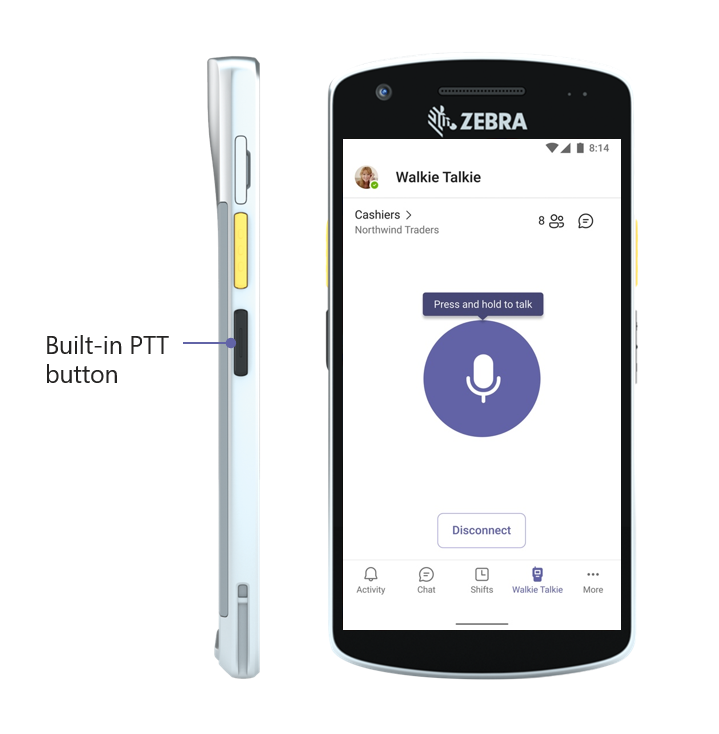
Walkie Talkie integrated on Zebra devices and Walkie Talkie iOS is now generally available.
With continued labor shortages in most industries, strains over shift scheduling have worsened for teams to not only cover shifts as usual but to now do so with fewer people. When asked what technology solutions could help with reducing workplace stress, the number one choice was team scheduling (37 percent).
To continue providing workers with the flexibility to own their schedule, their own way, today we are announcing the general availability of the Reflexis Shifts connector for Teams which integrates with the Reflexis Workforce Scheduler (RWS) to create a seamless, real-time sync for viewing, assigning, and managing shift requests. As a leading workforce management solution, RWS provides targeted and flexible scheduling management. Together with Teams, RWS helps drive worker autonomy, delivers optimized scheduling, and gives organizations a new opportunity to provide frontline workers with access to their schedules in a consistent and flexible manner.
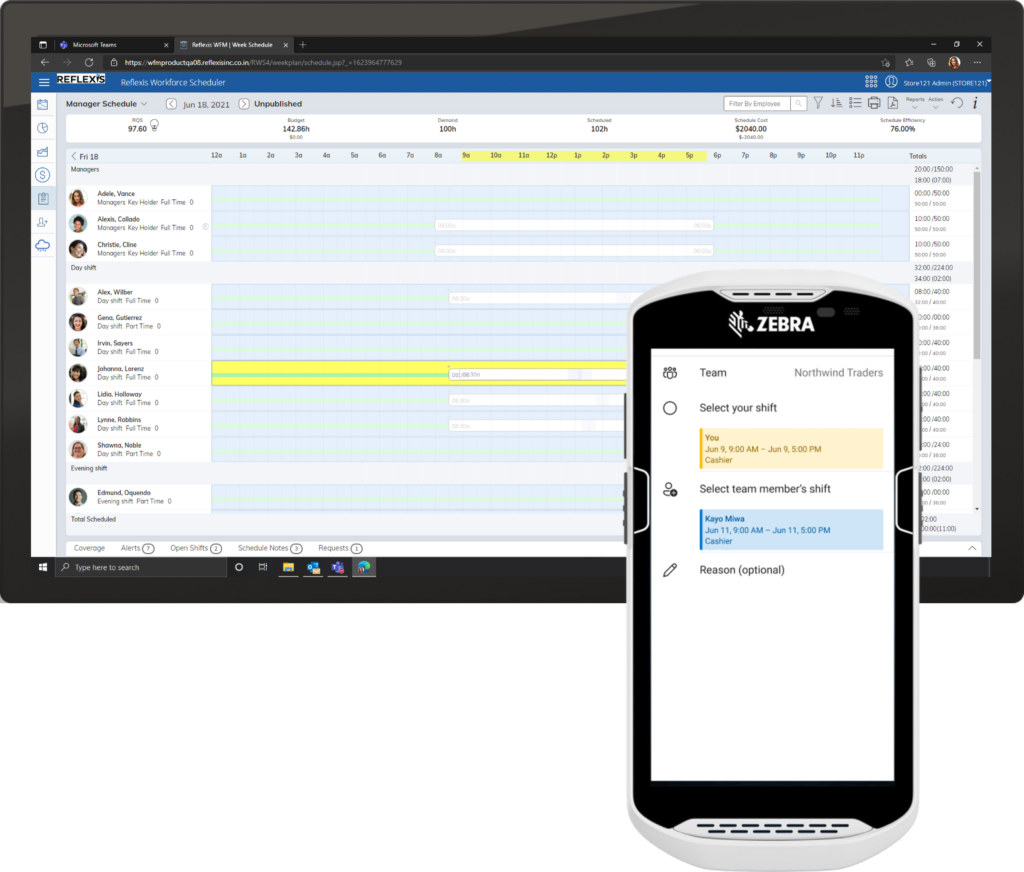
Reflexis Shifts connector for Teams will be generally available January 2022.
Another one of the top five technology solutions believed to relieve stress on the frontline is managing appointments, which has experienced massive transformations as more and more in-person appointments have moved to virtual ones. Now workers can have a comprehensive view of virtual appointments in one location, including real-time updates on wait times, queueing, missed appointments, and staffing delays to create a first-class experience for customers and patients.
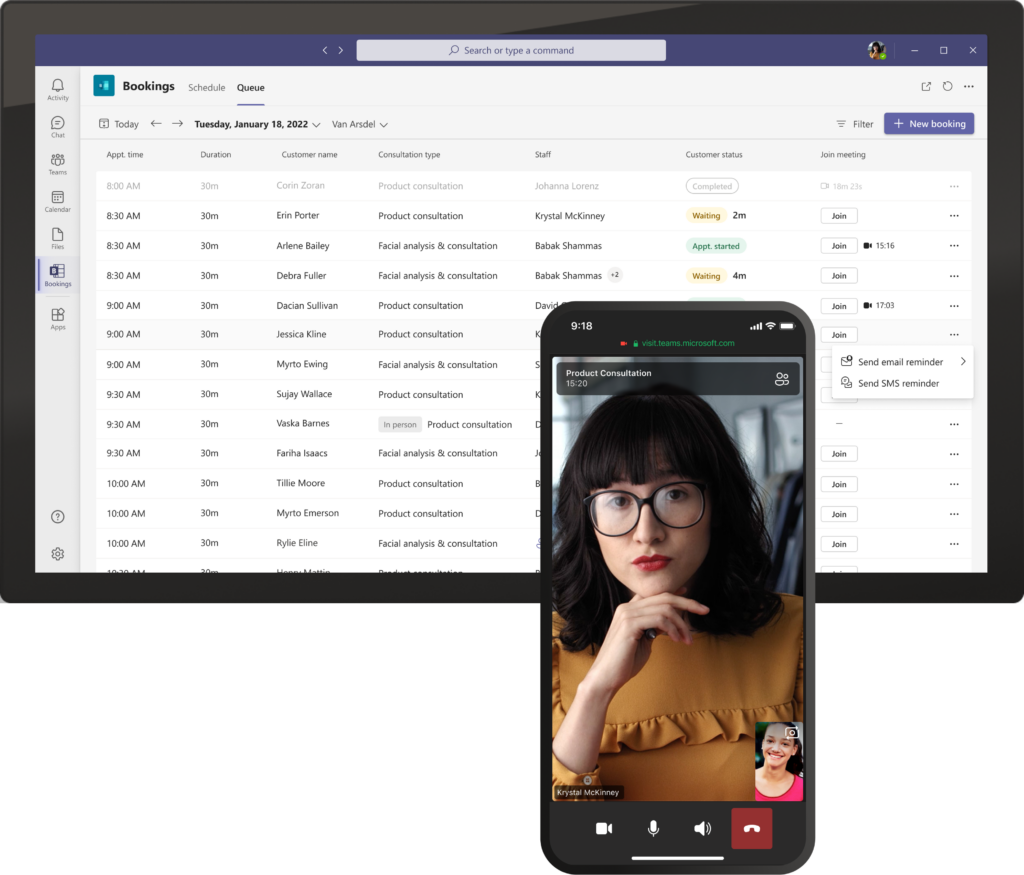
Scheduled queuing in virtual visits will be generally available January 2022.
Additionally, to enable workers to stay in the flow of work and reduce stress around approval updates, we are integrating the Approvals app directly into the industry processes that frontline workers rely on. Now workers can manage and request approvals in their line of business with Power Apps component framework (PCF) controls, as well as require details like mandatory comments or group approvals to make sure approvals, and the processes that depend on them, run smoothly.
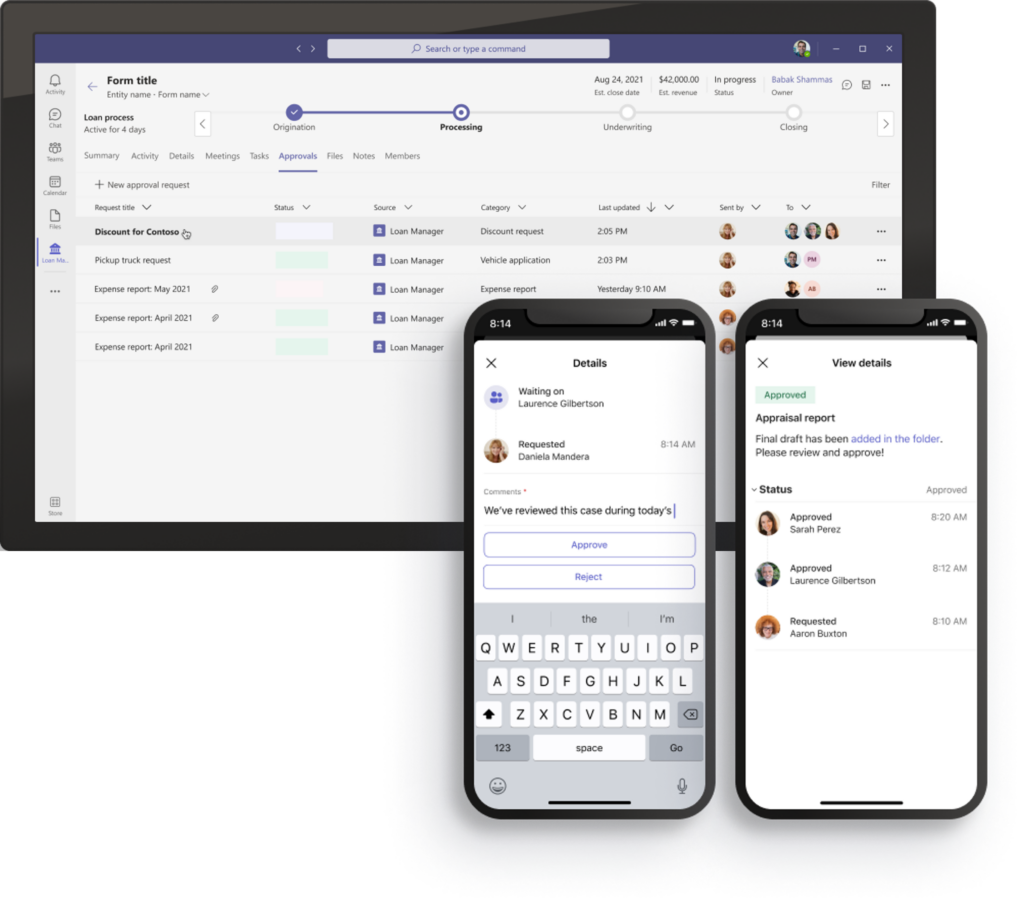
Approvals mandatory comments will be generally available this month, and PCF controls and group approvals will be available in February 2022.
Finally, our suite of identity and endpoint management solutions can help take the stress out of sharing a device on the frontline. On top of using a GPS-powered map for locating a misplaced device with Microsoft Endpoint Manager, IT will soon be able to trigger an audio notification to help frontline workers easily find their misplaced device. Plus, when devices are enrolled in shared device mode through Microsoft Azure Active Directory (Azure AD), workers can easily sign out of all supported applications—like Teams and Managed Home Screen, as well as other applications, like Workday—with a single tap on Android devices to make them ready and compliant for the next worker.
2. Prioritize and modernize training
While the data shows improved optimism from frontline workers about the ability for technology to improve life on the job, more than 50 percent of those surveyed say their company hasn’t provided the training needed to do their job effectively. Frontline workers are eager for training and companies will need to prioritize training initiatives and ensure it is accessible for everyone in the organization. With tools to onboard new teammates ranked as the second most important technology to help frontline workers with workplace stress, this is especially important as staffing continues to fluctuate.
Microsoft Viva Learning enables frontline employees to discover, access, share, and track learning content right from Teams. Companies can keep the entire workforce up to date and quickly onboard new employees on training, policies, and general learnings with the latest learning management system (LMS) integrations. The LMS assignment feature enables corporate employees to assign training and learnings from partner solutions like SAP SuccessFactors, Cornerstone OnDemand, and Saba Cloud to enable workers to easily access these assigned learnings on any device through Teams.
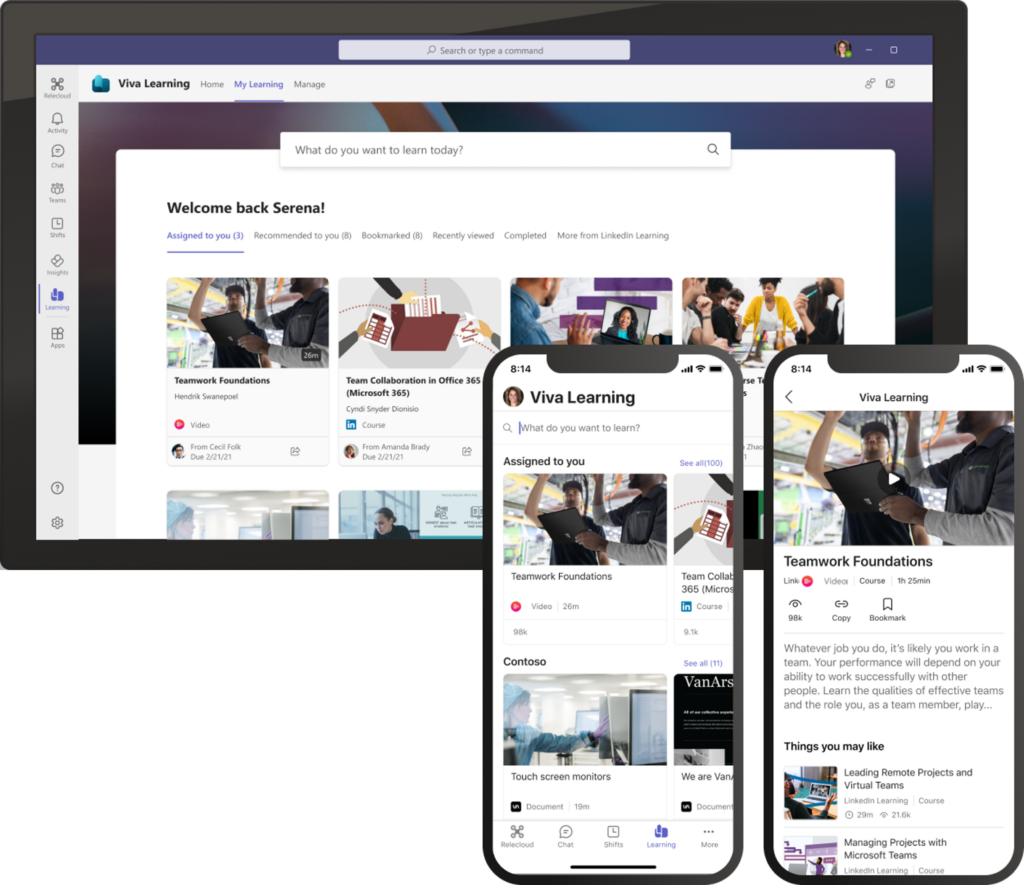
Learning management system assignment feature will be generally available January 2022.
Plus, new partnerships with learning providers, like EdCast and OpenSesame, will join existing partners like Go1 and Coursera to offer a depth and breadth of frontline learning content. This extensive partner content library, along with any organization-created learning content through the SharePoint integration, will help frontline workers train and upskill with relevant learning content whether on mobile, tablet, or desktop.
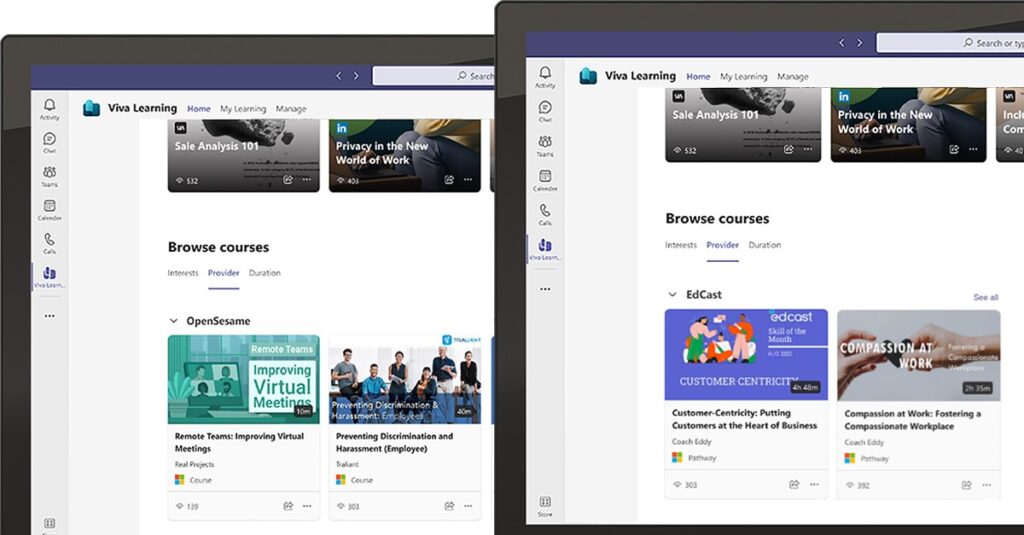
EdCast will be generally available January 2022 and OpenSesame will be generally available February 2022.
“We are thrilled to continue our partnership with Microsoft and extend the value of Viva Learning by offering organizations the full EdCast skilling smartcards, pathways, and journeys to share, bookmark, and integrate into broader learning journeys.”—Karl Mehta, CEO, EdCast.
“Our partnership with Microsoft Viva Learning allows companies to curate the perfect list of courses for every learner, all while in the flow of their work.”—Don Spear, CEO and Cofounder, OpenSesame.
3. Build company culture that includes the frontline
A strong culture is often what separates successful companies from the rest, impacting not only business performance, but also motivating, retaining, and attracting the best people to an organization. But company culture is not trickling down to the frontline. The frontline workforce cites a culture and communication disconnect from leadership, with 68 percent of frontline managers saying leadership does not prioritize building workplace culture and 63 percent of frontline workers noting messages from leadership often get lost and do not reach them.
Technology like Microsoft Viva Connections can play a critical role in bridging that culture and communication gap—allowing leadership to share messages, company updates, and kudos to the frontline while empowering frontline workers to share thoughts and ideas back. Now with new Viva Connections strategic partners Workday and Espressive, workers can easily access important company resources and actions in one location.
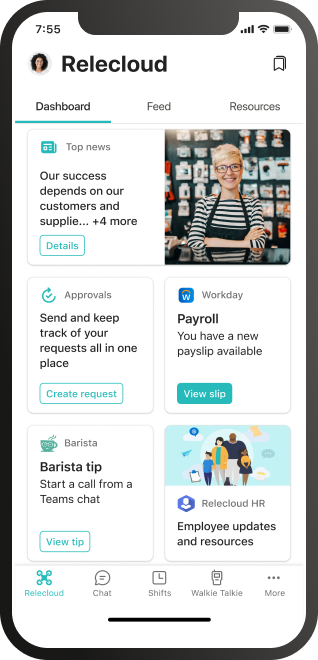
Espressive will be available in February and Workday card within the calendar year 2022 in Viva Connections
Joint customers will be able to leverage the power of Workday directly within Viva Connections, furthering the experience for employees to access Workday insights and actions when and where they naturally work, without requiring employees to leave Teams. Using Workday employee self-service capabilities, such as an intelligent clock in and clock out experience, a frontline worker, for example, can be notified that their break is nearly over, and with a tap, clock back in from their mobile device.
Espressive provides a single place for employees to go for immediate, personalized self-help in nine languages across 14 enterprise departments (like IT, Human Resources, and Payroll) through Viva Connections, with pending requests and issues accessible through dashboard cards. Espressive Barista is an AI-based virtual support agent (VSA) that helps automate the resolution of employee questions, issues, and requests with personalized responses, so workers get the answers they need.
Looking forward
A strong frontline means a better bottom line. From team scheduling and onboarding to automating tasks and managing appointments, companies can ease the daily burden on their frontline workforce by providing the right technology tools and creating a strong company culture. The right solutions can not only maximize frontline workers’ productivity, but also enable a consistent sense of culture that leads to stronger retention, better customer interactions, and deeper alignment to company missions.
At Microsoft, in partnership with industry leaders, we continue to innovate around solutions that help reduce stress, modernize training, and rebuild culture for those on the frontline. For more findings on the opportunities to empower frontline workers, read the full Work Trend Index Special Report. And check out our Look Book and our new Mechanics show for a closer look at the new Microsoft 365 product innovations to power the frontline.
Interested to learn more about how Microsoft Teams can digitally empower your frontline workforce? Subscribe to our newsletter!


